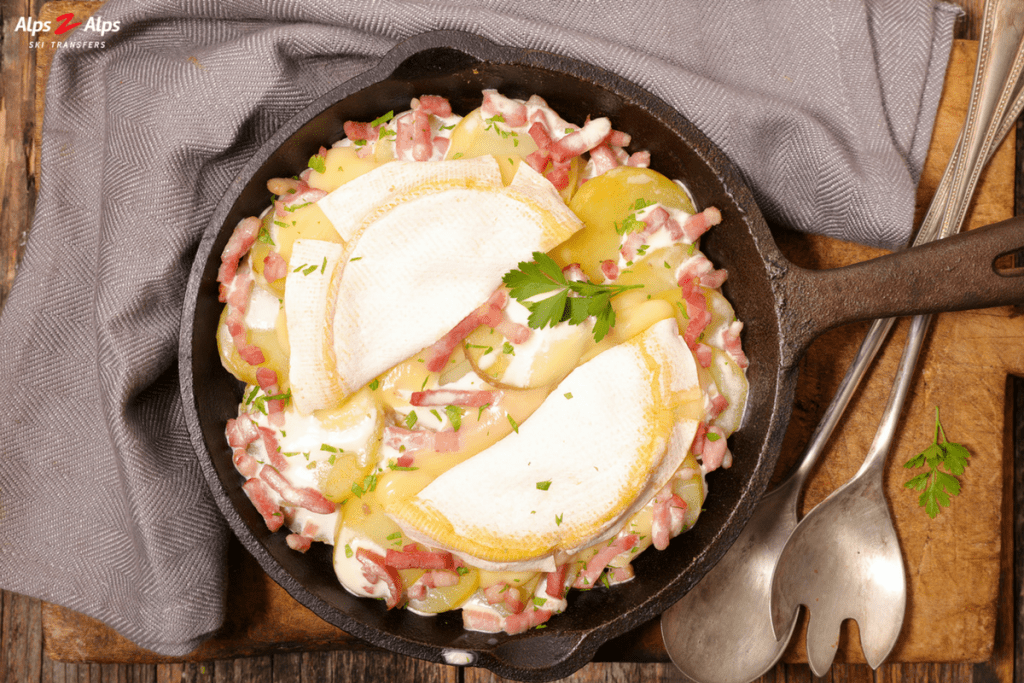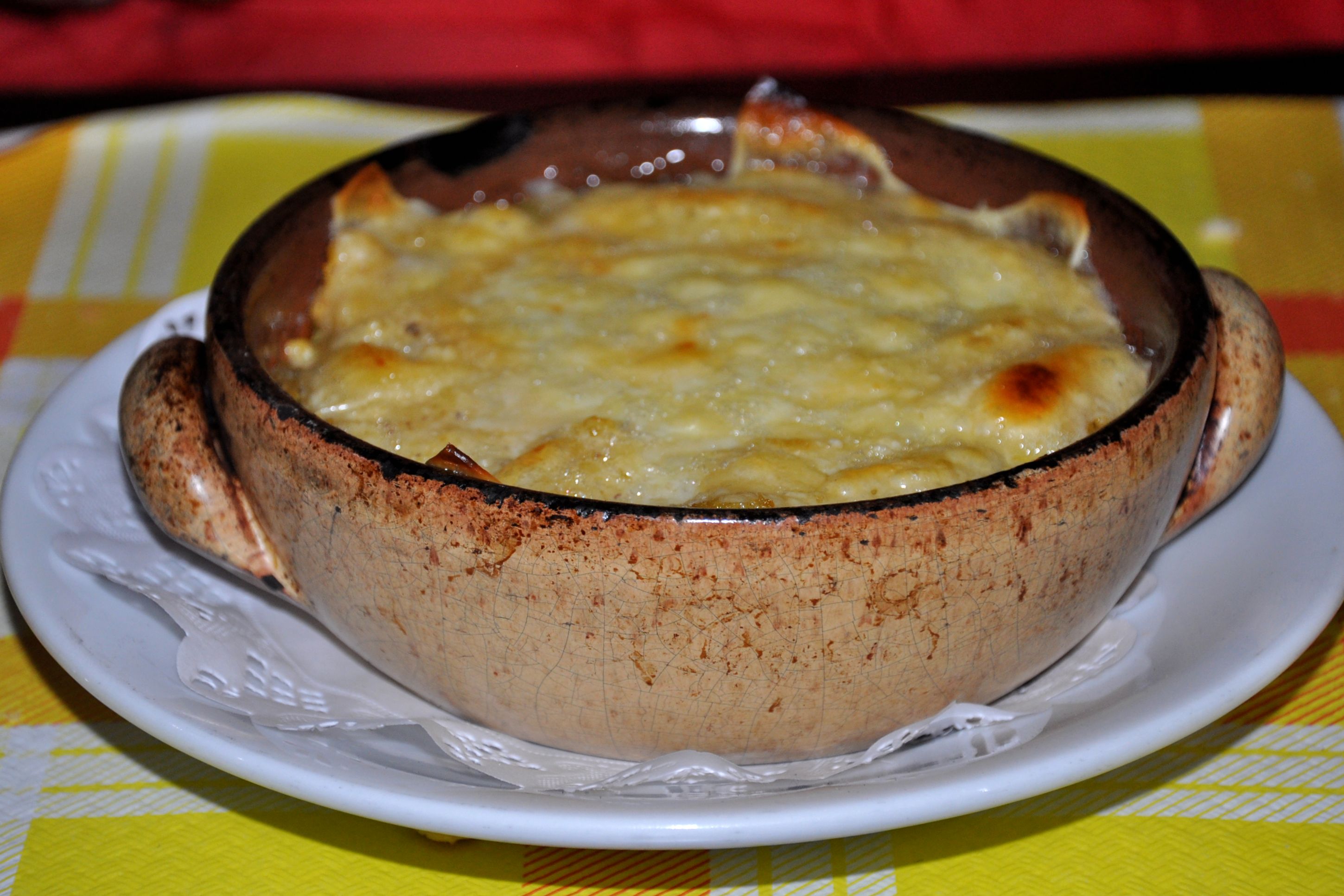Alpine food, a symphony of flavors and textures, sets the stage for this enthralling narrative. Rooted in ancient traditions and shaped by diverse cultural influences, it offers a tantalizing glimpse into the heart of mountain communities. From hearty stews to delicate pastries, alpine cuisine is a testament to the ingenuity and resilience of those who call these majestic peaks home.
Delving into the realm of alpine food, we uncover its unique ingredients, culinary techniques, and regional variations. Common threads weave through these diverse culinary landscapes, showcasing the shared experiences and challenges faced by mountain dwellers. Whether it’s the use of fresh, seasonal produce, the preservation of meats and cheeses, or the mastery of slow-cooking methods, alpine cuisine is a testament to the harmonious balance between tradition and innovation.
Alpine Food History
Alpine cuisine is a culinary tradition that has developed over centuries in the mountainous regions of Europe, particularly in the Alps. Its origins can be traced back to the Neolithic period, when humans first settled in the alpine valleys. The harsh climate and limited agricultural resources forced the alpine people to rely on a diet based on locally available ingredients such as milk, cheese, and meat from domesticated animals.
Cultural Influences
Over time, alpine cuisine has been influenced by various cultural groups that have passed through or settled in the Alps. The Romans introduced viticulture and olive oil, while the Germanic tribes brought their own culinary traditions, including the use of spices and herbs.
The French and Italian cuisines have also had a significant impact on alpine food, with the introduction of dishes such as fondue, raclette, and polenta.
Traditional Dishes
Traditional alpine dishes are typically hearty and flavorful, designed to provide sustenance in the cold, mountainous environment. Some of the most well-known dishes include:
- Fondue: A melted cheese dish served with bread or vegetables for dipping.
- Raclette: A dish made with melted cheese scraped onto boiled potatoes, often served with pickles and onions.
- Polenta: A cornmeal porridge that can be served as a main course or side dish.
- Rösti: A potato pancake that is often served with cheese or other toppings.
- Käsespätzle: A type of pasta made with cheese and eggs, often served with a fried onion topping.
These dishes are not only delicious but also hold cultural significance in the alpine regions, representing the unique history and traditions of the people who live there.
Key Ingredients and Characteristics: Alpine Food

Alpine cooking is characterized by its use of fresh, local ingredients, often sourced from the mountains themselves. Common ingredients include:
- Dairy products:Milk, cheese, and butter are staples of alpine cuisine, used in everything from fondue to pastries.
- Meat:Beef, pork, and lamb are commonly used, often cured or smoked to preserve them in the harsh mountain climate.
- Vegetables:Potatoes, cabbage, and onions are common vegetables used in alpine dishes, often cooked in hearty stews or soups.
- Herbs:Alpine herbs, such as thyme, rosemary, and marjoram, add flavor and aroma to alpine dishes.
Alpine food is known for its rich, hearty flavors and textures. Dishes are often slow-cooked, allowing the flavors to develop and blend. The use of dairy products adds a creamy richness, while the herbs and spices provide a savory depth of flavor.
The textures of alpine food can range from tender and melt-in-your-mouth to crispy and crunchy.
Techniques and Methods
Alpine cooking techniques include:
- Fondue:A melted cheese dish served with bread or vegetables for dipping.
- Raclette:A melted cheese dish served with potatoes, vegetables, and meats.
- Tartiflette:A potato dish topped with melted cheese, bacon, and onions.
- Polenta:A cornmeal porridge served with various toppings.
- Rösti:A potato pancake served with various toppings.
These techniques and methods showcase the versatility of alpine cuisine, allowing for a wide range of dishes to be created using simple, local ingredients.
Regional Variations
Alpine cuisine exhibits significant variations across different regions, influenced by geography and climate. These variations reflect the diverse cultural heritage and local ingredients available in each area.
The mountainous terrain of the Alps presents challenges for agriculture, leading to a reliance on hardy crops and livestock. The availability of wild plants, herbs, and berries also contributes to the unique flavors of alpine dishes.
Central Alps
- Fondue and raclette are popular cheese-based dishes.
- Rösti, a potato pancake, is a staple side dish.
- Birchermüesli, a breakfast cereal made with oats, nuts, and fruit, originated in Switzerland.
Eastern Alps
- Kaiserschmarrn, a shredded pancake, is a popular dessert.
- Knödel, bread dumplings, are often served with meat dishes.
- Gulasch, a beef stew, reflects the influence of neighboring Hungary.
Western Alps, Alpine food
- Tartiflette, a potato gratin with cheese and bacon, is a Savoyard specialty.
- Polenta, a cornmeal porridge, is common in northern Italy.
- Daube, a beef stew with red wine, is a traditional dish from Provence.
Health and Nutritional Benefits
Alpine cuisine is renowned for its wholesome and nutritious qualities. It is rich in essential vitamins, minerals, and antioxidants, providing numerous health benefits.Alpine dishes often incorporate fresh fruits, vegetables, and herbs, which are excellent sources of vitamins and minerals. These nutrients are vital for maintaining a healthy immune system, supporting bone health, and promoting overall well-being.
Antioxidant-Rich Ingredients
Alpine cuisine is particularly rich in antioxidants, which help protect the body from damage caused by free radicals. Free radicals are unstable molecules that can contribute to aging, inflammation, and chronic diseases. Alpine foods like berries, leafy greens, and certain herbs contain high levels of antioxidants, such as anthocyanins, flavonoids, and carotenoids, which neutralize free radicals and reduce their harmful effects.
Examples of Alpine Dishes Promoting Well-being
*
-*Polenta with Wild Mushrooms
Polenta, a cornmeal dish, is a staple in alpine regions. When paired with nutrient-rich wild mushrooms, it provides a hearty and nutritious meal that is high in fiber, protein, and antioxidants.
-
-*Alpine Cheese
Alpine cheeses, such as Gruyère and Emmental, are excellent sources of calcium, protein, and probiotics. Probiotics are beneficial bacteria that support gut health and immune function.
-*Herbal Teas
Alpine herbal teas, such as chamomile, peppermint, and elderflower, are soothing and can aid digestion, reduce stress, and promote relaxation.
Alpine Food Culture
Alpine cuisine is deeply ingrained in the local communities that inhabit the mountainous regions. It plays a vital role in shaping their cultural identity, social interactions, and traditions.
Alpine food is not merely a source of sustenance but a symbol of community and a testament to the resilience of the people who have lived in these challenging environments for centuries.
Traditions and Rituals
Alpine cuisine is intertwined with a rich tapestry of traditions and rituals. Many dishes are associated with specific festivals, holidays, and life events.
- During the Alpine summer, herders gather in high mountain pastures for the “Alpaufzug,” a traditional festival marking the ascent of cattle to their summer grazing grounds. This occasion is celebrated with hearty meals featuring grilled meats, local cheeses, and fresh produce.
- In the autumn, the “Almabtrieb” marks the return of the cattle to the valleys. This event is accompanied by elaborate feasts and music, with traditional dishes like “Käsespätzle” (cheese noodles) and “Schupfnudeln” (potato dumplings) taking center stage.
Social and Cultural Significance
Alpine food is a powerful expression of the region’s cultural heritage and a source of pride for local communities.
- The communal nature of alpine meals fosters a sense of togetherness and belonging. Extended families and neighbors often gather around the table to share hearty dishes and engage in lively conversations.
- Alpine cuisine has also played a significant role in shaping the region’s tourism industry. Visitors from around the world are drawn to the unique flavors and culinary traditions of the Alps, contributing to the local economy and preserving the cultural heritage of the region.
Modern Interpretations

Modern chefs are reimagining alpine food by incorporating contemporary culinary techniques and flavors. They are experimenting with fusion cuisine, blending alpine ingredients with flavors from other culinary traditions. This fusion has resulted in innovative alpine dishes that showcase the versatility and adaptability of alpine cuisine.
Fusion of Alpine Flavors
Chefs are exploring the fusion of alpine flavors with Asian, Mediterranean, and even Latin American cuisines. For example, alpine cheese fondue is being paired with Asian spices and sauces, while alpine meats are being incorporated into Mediterranean-style pasta dishes.
Innovative Alpine Dishes
Some examples of innovative alpine dishes that showcase contemporary trends include:
- Polenta with alpine cheese and truffle oil
- Alpine cheese fondue with Asian dipping sauces
- Alpine meat ravioli with Mediterranean herbs
- Alpine cheese soufflé with Latin American spices
These dishes demonstrate the creativity and innovation of modern chefs, who are pushing the boundaries of alpine cuisine while staying true to its traditional roots.
Alpine Food Tourism

Alpine food plays a significant role in tourism, attracting visitors to alpine regions worldwide. Food experiences enhance travel by providing a deeper understanding of the local culture, history, and traditions.
Alpine food tours offer a unique way to explore the region’s culinary heritage. These tours typically visit local farms, markets, and restaurants, allowing participants to sample traditional dishes and learn about the ingredients and techniques used.
Culinary Events
Alpine regions host numerous culinary events throughout the year, celebrating the region’s food and drink. These events often feature cooking demonstrations, tastings, and competitions, providing an immersive experience for visitors.
FAQ Overview
What is the history of alpine cuisine?
Alpine cuisine has its roots in the traditional practices of mountain communities, influenced by the availability of local ingredients and the need for sustenance in harsh environments.
What are the key ingredients used in alpine cooking?
Alpine cooking often features fresh produce, dairy products, and meats, along with herbs and spices that thrive in mountainous regions.
How does alpine cuisine vary across different regions?
Alpine cuisine showcases regional variations due to differences in geography, climate, and cultural influences, resulting in a diverse range of dishes and flavors.
What are the health benefits of alpine food?
Alpine cuisine can be rich in nutrients due to the use of fresh, unprocessed ingredients and traditional cooking methods that preserve vitamins and minerals.
How is alpine food being reimagined by modern chefs?
Modern chefs are experimenting with alpine flavors and ingredients, incorporating them into innovative dishes that blend traditional techniques with contemporary culinary trends.
